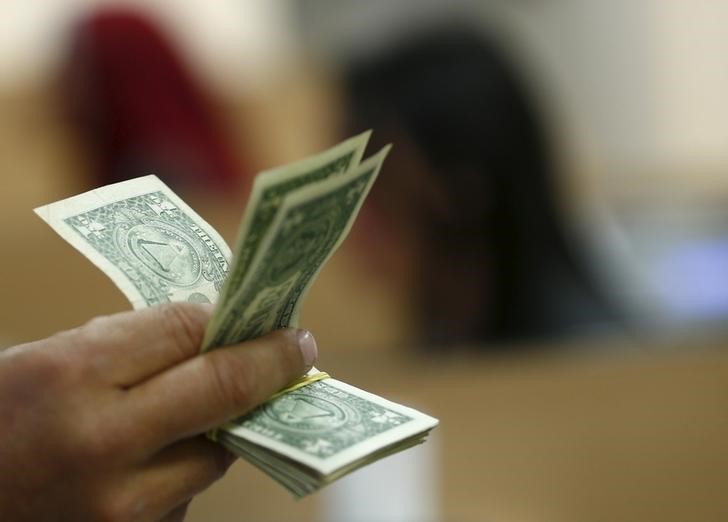Bitcoin price today: gains to $120k, near record high on U.S. regulatory cheer
By Gina Lee
Investing.com – The dollar was up on Friday morning in Asia, as concerns over the global economic recovery from COVID-19 continue to mount. Safe-haven currencies such as the Japanese yen and Swiss franc also gained, while riskier currencies such as the Australian and New Zealand dollars remained near multi-month lows.
The U.S. Dollar Index that tracks the greenback against a basket of other currencies inched up 0.05% to 92.453 by 11:47 PM ET (3:47 AM GMT). However, the U.S. currency dropped from a three-month high.
The USD/JPY pair edged up 0.15% to 109.95, with the yen holding onto gains from the previous session's 0.8% rally. However, Japan has declared a fresh state of emergency in Tokyo, three weeks before the Olympic Games are due to open in the city, as COVID-19 case numbers continue to rise.
The AUD/USD pair edged down 0.11% to 0.7420 with the Australian dollar continuing its losses after dropping 0.7% and hitting its weakest since mid-December 2021 on Thursday. The current lockdown in Sydney could be extended as the city struggles to contain its latest outbreak.
Across the Tasman Sea, the NZD/USD pair edged down 0.19% to 0.6940.
The USD/CNY pair inched down 0.09% to 6.4840. Chinese data, released earlier in the day, said the consumer price index (CPI) grew a smaller-than-expected 1.1% year-on-year in June, while contracting a bigger-than-expected 0.4% month-on-month. Meanwhile, the producer price index (PPI) grew 8.8% year-on-year.
The GBP/USD pair inched down 0.07% to 1.3775.
The Swiss franc held on to its gains from the previous session, when it soared more than 1%, on Friday.
Bonds rallied while global stocks plunged as concerns about the outbreaks involving the Delta variant of COVID-19 derailing economic recovery mounted. The benchmark U.S. Treasury yield fell to a nearly five-month low of 1.25% during the previous session, from the 1.5440%-high hit two weeks ago.
This in turn has put pressure on the greenback.
"There is certainly a wind of change in markets,” as concerns about inflation now shift to concerns about growth, National Australia Bank (OTC:NABZY) strategist Rodrigo Catril said in a note.
"There has not been a single catalyst triggering a turn in sentiment, instead it seems that an accumulation of events," including the rapid spread of the Delta variant and fears that central banks could begin asset tapering earlier than expected and delay the economic recovery from COVID-19, the note added.
Data released on Thursday also said 373,000 initial jobless claims were filed in the U.S. over the past week. The higher-than-expected number was another indication that the labor market’s recovery from COVID-19 continues to be uneven.
